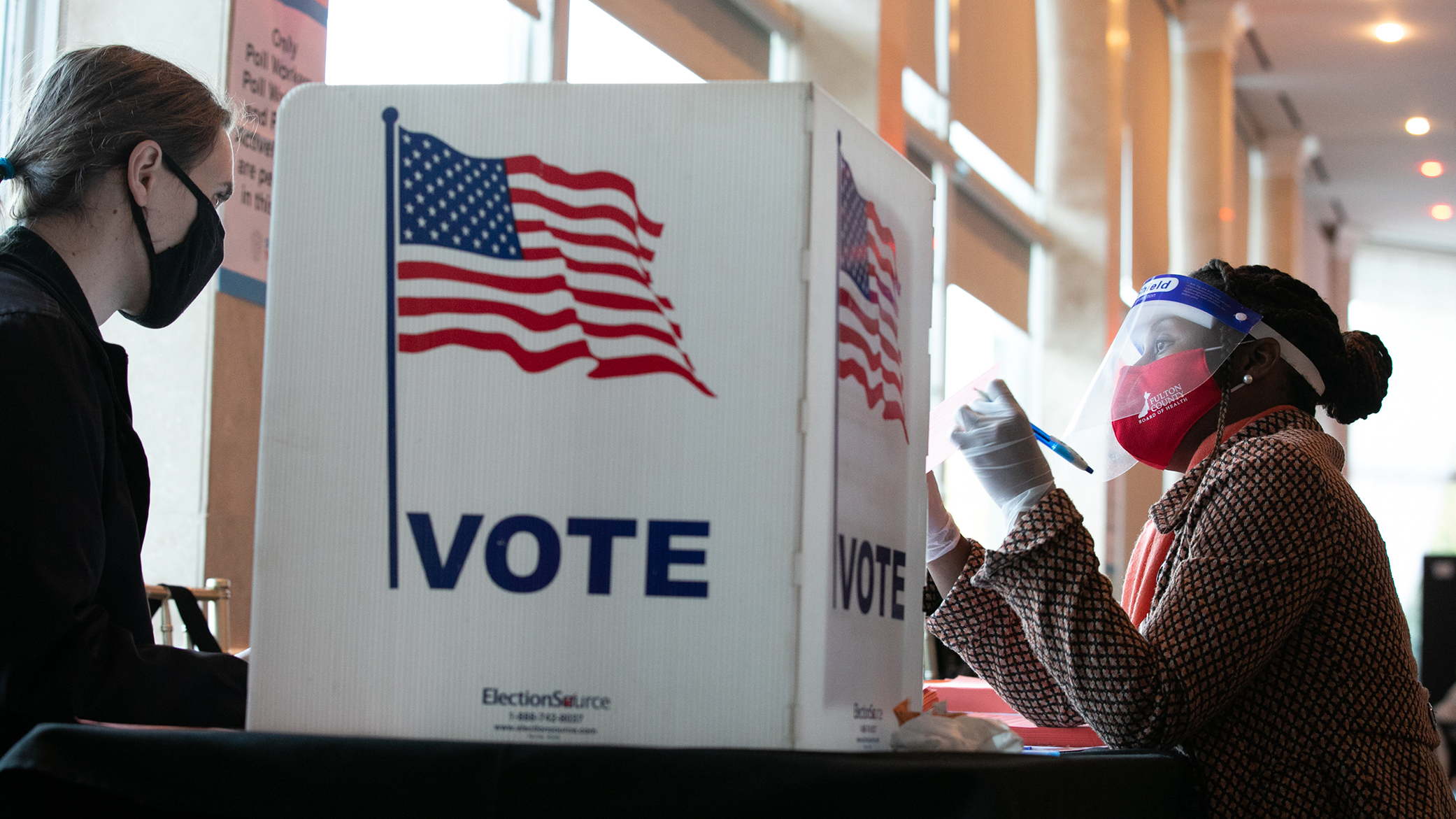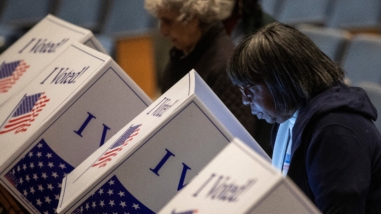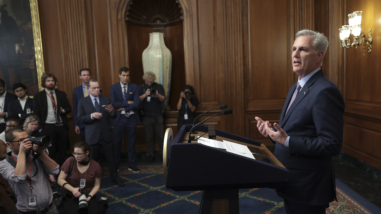Securing the future of U.S. elections

Even before the COVID-19 pandemic hit, it was clear that the 2020 election would be challenging. We knew it would be conducted amidst pervasive polarization and partisan rancor, and that disinformation would be a more serious threat than ever before. By spring 2020, though, the situation appeared far more dire than anyone had expected as the pandemic put our entire electoral system to the test. Election officials—and the postal service—would have to process massive increases in mail-in ballots. There were shortages of polling locations and poll workers, and of critical personal protective equipment to protect them. Would our democratic processes be able to flex and accommodate everything being asked of them in order to safeguard the health of voters and their ability to participate? Would our democratic institutions be strong enough to preserve trust in our election system? As we have discovered in the weeks since November 3, the answer to the first question is a resounding yes. And yet, the slow start to an official transition, the threats against election workers and officials of both parties, the surge of election-related conspiracy theories—all suggest that the answer to the second is murkier. As with so many COVID-related lessons, some of the things we’ve learned this year may provide a useful map for the future, and a stark reminder of the extensive work that needs to be done to secure trust in U.S. elections.
Safeguarding the vote
Democracy is of course more than just elections, but they are a crucial interface between citizens and their government and the foundation of democratic legitimacy. The U.S.’s election system is highly decentralized and varies incredibly at the state and local level. Some states and counties have better records than others, but many are chronically underfunded. Voting technology, from registration to tabulation, is aging and vulnerable to cyberattacks. When errors occur, regardless of whether they arise from human error or malign interference, they are often perceived as partisan. The Supreme Court’s Shelby County decision in 2013, which substantially undermined the Voting Rights Act, has enabled political actors at the state and local levels to erect new obstacles to frustrate or discourage voting by perceived or expected political opponents—efforts that, for decades, have marginalized and excluded Black voters, and also impeded participation by other racial and ethnic groups, as well as the poor, young voters, and more. These shortcomings, particularly when combined with rampant political polarization, make the whole system vulnerable to disinformation and conspiracy mongering.
In a report this spring, the Ad Hoc Committee for 2020 Election Fairness and Legitimacy, convened at UC-Irvine by election law expert Rick Hasen, outlined recommendations in law, media, political norms, and technology that were necessary to secure the legitimacy of the election during a crisis, and the scenarios that could play out during and after it. Over the next few months, many of the good and bad possibilities they contemplated—from the expansion of mail-in voting to rampant disinformation—were realized.
Still, this election was the most secure in American history, with historic voter turnout: at 66.7%, turnout was higher than any U.S. election in more than a century. It feels like a miracle but it was, in fact, the opposite. The election ran well because a huge number of very diverse organizations built strong, localized networks and worked with discipline and focus. They saw what was needed in their communities and made it happen with real entrepreneurship. This took an unprecedented level of private money and massive amount of mobilization across state and local governments, communities, businesses, philanthropy, and more. The organizations and officials that implemented new practices with focus and discipline cannot be praised enough for their grace under fire.
Trusting our democracy
Despite having pulled off a well-run election, we find ourselves facing a crisis in trust in U.S. elections. Though trust has been declining for some time, President Trump has dramatically accelerated that deterioration with his baseless allegations of widespread voter fraud. The fact that extensive searches for evidence to support his claims have come up with nothing is a testament to the integrity of the result, but these claims—echoed by the president’s staunch supporters in government and media—continue to damage trust in the system nonetheless.
A first step to building trust will be to address the system’s long-standing shortcomings and strengthen its overall capacity. Some of the lessons from 2020 could provide a blueprint, including simplifying and expanding the vote-by-mail process and expanding options for early voting and pre-canvassing (the processing of absentee ballots before election day) to facilitate a swift counting process. The pandemic forced officials to engage in painstaking preparation for a wide variety of scenarios. Post-pandemic voting could continue to benefit from this level of organization and scenario planning.
The results of this year’s elections are being upheld in courts of law, but we must also consider the court of public opinion. As the president continues to spread conspiracy theories about electoral fraud, more and more of the public is doubting the electoral system regardless of the facts on the ground. Much was done this year to inoculate communities against Election Day mis- and disinformation, including investing in media training and communications efforts to rapidly explain and disseminate accurate information, and equipping election officials to share what’s actually happening on the ground. But those efforts have been put to a severe test by the disinformation campaign that the president is leading.
Building trust also means building infrastructure. The successful work of election officials this year only underlines the critical need for financial support to upgrade our elections systems and processes. The mobilization we saw over the past year requires sustained investment every year, not just in advance of elections. Moreover, the 2020 election saw an unprecedented level of private philanthropic support for election administration, including for equipment and training for elections officials. There are many worthy areas of philanthropic investment in nonprofit and research organizations that support healthy elections. Private support for the actual running of elections of the kind we saw this year, however, is neither sustainable nor healthy for a democracy. It is crucial that elections themselves are funded with public, not private dollars, such that those funds are subject to the transparency and accountability mechanisms of legislative oversight, and to minimize the appearance that private donors are driving public decisions.
Finally, we cannot build trust in U.S. elections without addressing the system’s long-standing marginalization of voters of color. We should not assume that process improvements and litigation alone will remediate the marginalization of Black Americans and other communities targeted by restrictive voter laws. It is also critical to invest—as so many individual and foundational donors did this year—in those communities to support local civic participation as they see fit.
We will doubtless continue to learn lessons from our unique experience in the 2020 elections and should absolutely celebrate the incredible effort that went into the successful effort to safeguard the vote. As we observe—and combat—the ongoing attacks on the system, let us also recommit to strengthening and improving our electoral system for the long-term health of our democracy.



